| Abstract: This document covers the three most popular topologies of voltage references. These include bandgap and buried zener topologies in three-terminal series voltage references and zener topologies in two-terminal shunt voltage references. Also demystified are the definitions of common voltage reference parameters. The first considerations in choosing a voltage reference are output voltage and initial accuracy. Often overlooked, however, are the various other data-sheet parameters that can assume major importance in specific applications. The following discussion of voltage-reference basics will help you better understand the performance parameters associated with the most common voltage-reference topologies: the two-terminal shunt and the three-terminal series designs. Two-Terminal (Shunt) ReferenceAs its name implies, the shunt reference operates in parallel with its load (Figure 1). It can be viewed as a voltage-controlled current sink in which the controlling voltage is applied to its input terminal. With no load applied, the shunt reference sinks just enough current so that the voltage drop across R1 produces the desired output voltage (VIN - IREFR1 = VREF). If, for example, VIN = 6.0V and the desired VREF is 5.0V, the reference IREF creates a 1.0V drop across R1. The reference then makes IREF adjustments as necessary to maintain 5.0V across its input.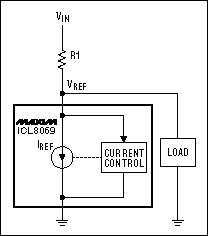 Figure 1. The shunt reference is connected in parallel with its load. Now apply a load to the reference. IREF no longer equals IR1, because load current (IL) produces part of the voltage drop across R1. The reference automatically reduces its sink current by the amount IL. Thus, the total current through R1 doesn't change (IREF + IL equals the original IR1). IR1 is shunted between reference and load, hence the name "shunt reference." A shunt reference regulates the output voltage by adjusting its sink current to oppose changes in load current. Three-Terminal (Series) ReferenceThe series reference operates in series with its load (Figure 2). It can be viewed as a voltage-controlled resistance in which VOUT controls an internal resistance between the reference's input and output terminals. A series reference regulates by creating a voltage drop between its input and output, which is equal to the product of the load current and the controlled internal resistance. With no load applied, the series reference draws a small amount of current (IQ) through the internal resistance (R) to drop a voltage between input and output necessary to produce the correct VOUT.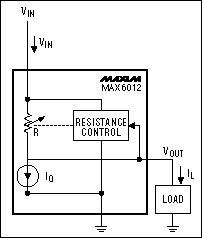 Figure 2. A series reference (its regulating part) is connected in series with its load. As load current increases, the reference maintains the desired output voltage by changing R as required to produce the correct drop between input and output. Applying Ohm's Law, one notes that to maintain a constant drop between input and output, R must decrease as IOUT increases. Parameter-Measurement Units for ReferencesThe units that specify parameters such as accuracy differ among the various manufacturers. For specifying accuracy, the units in common usage include parts per million (ppm), percentage (%), and voltage (V). All are acceptable, but to make "apples-to-apples" comparisons you must be able to convert one unit to any other. These relationships are clarified below.The most common means for stating reference accuracy is a percent of the nominal value, which isn't even a unit. It probably follows the convention for expressing tolerance on resistors, capacitors, and inductors. Typical percent-accuracy specifications for references are 1%, 1.5%, 2%, 5%, etc. Although percent accuracy is fine for comparing one reference with another, it does not provide specific information on how much the reference voltage deviates. What really matters is the variation in volts. To determine the voltage deviation of a reference specified in percent accuracy, you multiply the nominal output voltage of the reference by the percent accuracy and divide by 100. For example, a 2.5V reference accurate to ±1.5% has a deviation of Because the reference error can be above or below nominal, the total deviation is twice this value, or 75mV. The total output voltage variation equals the nominal voltage plus or minus the error voltage: Knowing these voltage limits for the reference gives you specific design boundaries for the circuitry supported by the reference. Another reference-accuracy unit found in data sheets is parts per million, more commonly abbreviated "ppm." This unit is typically used to specify temperature coefficients and other parameters that change very little under varying conditions. For a 2.5V reference, 1ppm is one-millionth of 2.5 volts, or 2.5 microvolts. If the reference is accurate to within 10ppm (extremely good for any reference), its output tolerance is as follows:
Converting this to voltage accuracy,
Converting to percent, Use of the term "bits" as a unit, as in "16-bit reference," is somewhat confusing. Does it represent an actual measurement of accuracy, or does it mean the reference is accurate enough for a 16-bit ADC? A 16-bit reference could be accurate to 1LSB or 2LSBs, so it cannot necessarily be considered sufficient for a 16-bit system. On the other hand, a reference "accurate to 16 bits" is specified with hard numbers. If the unit is specified by an actual measurement, then "accurate to 16 bits" is simply the value of the parameter divided by the claimed bit accuracy expressed in decimal form. For example, a 2.5V reference, claimed to be 16-bit accurate (another extremely accurate tolerance for any reference), should deviate by no more than the decimal equivalent of 16 bits: 216 = 65536. Therefore, 1 bit is 1/65536 of the total value. In this case, 2.5/65536 ≈ 38μV. If we assume 1-bit accuracy (± 1LSB), the output voltage can be 1 bit higher or lower than nominal, i.e., ±38μV. Converting to voltage accuracy,
Converting to percent,
Typical Parameters of Importance for ReferencesInitial accuracy speaks for itself. If you take a part off the shelf, connect it in a test circuit, and measure the output voltage, the measured value should be within the initial-accuracy tolerance specified in the data sheet. This spec is usually for room temperature only, and it provides a starting point for most of the other specifications.Temperature coefficient is the deviation of reference output voltage due to a change in the ambient or package temperature. Depending on the device structure and the way its output voltage is trimmed during the initial calibration, this output-voltage deviation can be positive (increasing with increasing temperature) or negative (decreasing with increasing temperature). By analogy, consider a simple resistive voltage divider (Figure 3A). Voltage at the common point (VOUT) is a fraction of the applied voltage VIN, equal to the ratio of the values of the two resistors. Both resistors change with temperature by the same percentage, maintaining a constant ratio, so VOUT also remains constant. 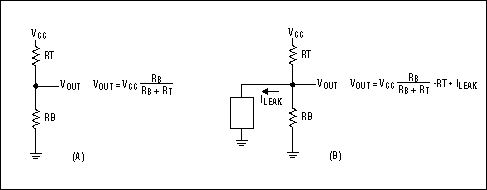 Figure 3. This simple resistor-divider analogy represents a voltage reference unloaded (A) and loaded (B). Note that current flowing through the resistors varies with the temperature and any leakage current from the common point of the divider (positive or negative) changes VOUT (Figure 3B). At room temperature, this change is usually compensated for by trimming one of the resistors (changing its value). However, if this variation of leakage current with temperature differs from the variation in divider current due to changes in the resistor values with temperature, the result is a change in VOUT with temperature. The VOUT change is called the temperature coefficient, or tempco. Although this analogy simplifies the more complex mechanism inside a reference circuit, it conveys the idea of a device tempco. Temperature hysteresis is the change in output voltage with a cycle of temperature variation. To measure, take a reference operating in a typical application, rated (as an example) for the extended operating temperature range (-40°C to +85°C), and record the output voltage at room temperature (+25°C). Cool the reference to -40°C, and then heat it to +25°C. Measure and record the output voltage again. The difference in these measurements (if any) is the temperature hysteresis. Conversely, you can measure at +25°C, heat the device to its maximum temperature (+85°C), and then cool it back to +25°C, measuring again. Any difference in these two room-temperature measurements also represents the temperature hysteresis. The deviation can be positive or negative. After many temperature cycles, one might deduce that the reference output voltage can be way off. Because temperature hysteresis is both positive and negative, however, the deviations resulting from a series of temperature cycles tend to cancel each other out, producing a final average output voltage very close to the nominal value. Line regulation, a measure of the change in output voltage due to a change in input voltage, is important if the input voltage changes while the reference is operating. Typical units are ppm/V and %/V. Line regulation is a DC parameter and is specified typically at DC. It measures the change in output voltage for two (or more) different DC input voltages, and it has little meaning if the input voltage varies rapidly, as for a voltage transient. In general, line regulation deteriorates inversely with the rate at which the line voltage changes. For applications likely to have line transients, reference-input capacitors are recommended to minimize the resulting variations. Load regulation is a measure of the change in output voltage due to a change in the reference load current. This parameter is important if the reference load current changes while the reference is operating. Again, load regulation is a DC parameter and is specified typically at DC. It measures the change in output voltage for two (or more) different DC load currents, and it has little meaning if the load current varies rapidly. In general, load regulation deteriorates inversely with the rate at which the load current changes. Output capacitors are recommended to stabilize the output voltage in applications subject to load-current transients. Typical units of measure are ppm/mA, %/mA, and percent change from no load to full load. Long-term drift (stability) is important if the reference must remain accurate for days, weeks, or years of continuous operation. It simply measures the variation in output voltage over a long period of time at some specified condition of steady-state operation. Long-term drift is a measure of the maximum and minimum output-voltage deviations over an extended time period, rather than a measure of deviation between "time A" and "time B." All other conditions (temperature, input voltage, load current, etc.) must be held constant if this measurement is to accurately reflect drift in the reference. Typical units are "ppm per 1000 hours." Supply current is self-descriptive, but consider these variations: For a series reference, the term "no-load current" is usually specified in the data sheet and often used interchangeably with the term "quiescent current." Because it designates the actual current drawn by an unloaded reference, no-load current does not specify the current drawn by that reference when loaded. Typical shunt references do not specify no-load current in the data sheet. Instead, they often list a minimum operating current (IMO). This parameter specifies the minimum current a reference must draw to maintain regulation. Note that a shunt reference must draw at least the minimum operating current under full-load conditions. Its series resistor (R1) must therefore accommodate the maximum load current plus the minimum operating current (Figure 4). In some applications, the minimum operating current (called "regulation current" in some data sheets) is disregarded, because it is so much smaller than the load current. 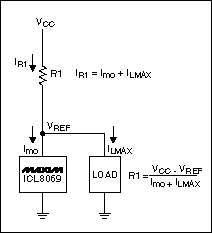 Figure 4. Current flow is the key for analyzing the operation of a shunt reference. Ground current: Often specified for a series reference, ground current measures the operating current at a given load. A series reference is in series with the load, so a measure of current flowing into the reference input yields the sum of load current and operating current. Ground current is often measured to determine the operating current for a series reference with load. Dropout voltage (VDO): very important in battery-operated equipment, applies only to the series reference. It is the minimum difference between input and output voltage that allows the reference to maintain its specified accuracy (VOUT + VDO = minimum input voltage). Battery voltage declines as the battery discharges, and to maximize useful life in the battery the reference must maintain an accurate output voltage while powered by the lowest-possible battery voltage. Thus, a lower dropout voltage allows continued operation at a lower battery voltage. Load capacitance: The ability of a reference to drive capacitive loads can be very important. Because typical references incorporate feedback control, their stability can be compromised by the zero introduced by a capacitive load; this can produce a large phase shift in the control loop that creates positive feedback at a particular frequency. Read the data sheet carefully for information on the range of load capacitance allowed. Some manufacturers refer to this limitation only in the text of the data sheet and not in the parameter tables. Noise: Although noise is apparent at a reference output, it is nonetheless often overlooked. A reference's noise, which is a random signal generated by active and passive devices inside the IC, affects its accuracy. For example, a 1mVp-p output noise voltage limits initial DC accuracy to no better than 1mV. For a 1.2V reference, this noise level alone limits initial accuracy to approximately 1%. Reference data sheets typically show noise in two frequency bands: low-frequency noise, ranging from 0.1Hz to 10Hz and specified in μVp-p, and wideband noise, ranging from 10Hz to 1kHz and specified in μVrms. Designating noise in two bands allows circuit designers to distinguish between wideband noise, which they can filter with practical capacitor values, and low-frequency noise, which they cannot. Also, if a capacitor large enough to filter the low-frequency noise were used, it is possible that the reference would be unstable with such a large capacitor placed at its output. AC line regulation: Although AC line regulation is not usually designated in a specification table, it directly influences the performance of the voltage reference. In most applications, the supply voltage to the reference has voltage spikes present. These spikes tend to be spread over a wide frequency range. The accuracy of the voltage reference is inversely proportional to the frequency of the input voltage variation. Because the AC line regulation is typically not specified, the reference data sheet should at least contain a graph showing the typical AC line regulation versus frequency. This graph would indicate the sensitivity of the reference to input system noise and could be used to determine the input filtering required. As the noise frequency increases, the input filtering must further reduce the input system noise in order for the reference to achieve its rated accuracy. AC load regulation/output impedance: The AC load regulation is another important parameter that is often left out of the specification table of a voltage reference. This parameter is important if the load current drawn from the reference is changing constantly. The accuracy of the reference is usually inversely proportional to the load variation frequency. A graph showing the AC load regulation or AC output impedance versus frequency should be contained in the reference data sheet. This graph should show what output filtering is required with the known output load variations in order to achieve the rated accuracy of the voltage reference. Line transient response: This parameter is typically shown as an oscilloscope screen shot displaying a step change in the input voltage and the resulting change and correction in the output voltage. This screen shot displays the recovery time of the reference in returning to a specified accuracy after such an event occurs. For this parameter, it is important to note the input and output capacitor values used. These capacitors have a tremendous effect on the performance of the reference. Load transient response/output settling time: This parameter is typically shown as an oscilloscope screen shot displaying a step change in the output current and the resulting change and correction in the output voltage. This screen shot displays the recovery time of the reference in returning to a specified accuracy after such an event occurs. For this parameter, it is important to note the input and output capacitor values used. These capacitors have a tremendous effect on the performance of the reference. Turn-on/turn-off settling time: The turn-on settling time is a measure of how quickly the output voltage of the reference stabilizes after an initial power-up. The output only needs to be stable and may not necessarily have reached the specified accuracy of the reference. Typically, this parameter is specified with an output voltage error greater than the specified accuracy, and it should always be given in the conditions of the parameter. This parameter is highly dependent on the input and output capacitor values used and the load applied to the reference. Turn-off time, on the other hand, is a simple measure of how long it takes for the output voltage of the reference to reach virtually zero volts. Likewise, this parameter is highly dependent on the input and output capacitor values used and the load applied to the reference. ConclusionVoltage references are often chosen in haste. Before making a decision, the designer will look at the price, the initial accuracy highlighted on the data sheet, and frequently nothing else. Make sure that you compare apples to apples when comparing references. When evaluating a specification listed on several data sheets, be sure that all are expressed in the same units. Determine what parameters are important for your application, and look beyond the initial-accuracy specifications.AppendixPopular Voltage-Reference TypesTwo-Terminal Shunt or Zener ReferenceA zener reference is based on the zener principle, in which the current in a reverse-biased diode begins to flow at a certain voltage threshold and then increases dramatically with an increase in voltage. A resistor in series with the diode establishes a constant current, allowing the zener to achieve a stable reference voltage. The zener reference behaves like a typical shunt or two-terminal reference. It can also be used as a voltage clamp.
Three-Terminal Series and Buried (Subsurface) Zener References
Three-Terminal Series (Bandgap) Reference Making a compromise between cost and outstanding performance (low-noise operation and accuracy), the bandgap reference has become one of the most popular voltage references available. It compensates for the effect of temperature by subtracting the negative-tempco voltage of a forward-biased base-emitter junction from a positive-tempco PTAT (proportional to absolute temperature) voltage. The PTAT voltage is generated by measuring and amplifying the voltage difference between two forward-biased diode junctions.
A similar article appeared in the April 2000 issue of EDN |
Understanding Voltage-Referenc
- Voltage(37193)
相關推薦
正確的布局和元件選擇是控制EMI的關鍵
正確的布局和元件選擇是控制EMI的關鍵
Abstract: Understanding the physics of voltage regulator topologies
2009-08-21 09:42:37 1346
1346
 1346
1346
Understanding Delta-Sigma Data Converters, 2nd Edition 中文翻譯出版
`Understanding Delta-Sigma Data Converters, 2nd Edition 中文翻譯版《Delta-Sigma 數據轉換器從入門到精通》已經出版了,在京東、天貓、當當都有銷售,敬請關注!`
2021-07-30 15:34:08
VOLTAGE QUADRUPLER USING TD310
VOLTAGE QUADRUPLER USING TD310The TD310 is a triple MOS or IGBT driver whichintegrates all
2009-05-12 09:57:13
ADC讀數怎么計算
the voltage measured using the ADC on a c8051. The ref voltage I know is 2.4volts and it is using a 12bit
2018-09-26 17:24:35
Demo Read Voltage VI程序(Tutorial子模板)
初學labview,剛剛在做一個VI程序模擬溫度測量,需要使用Demo Read Voltage子程序來仿真電壓測量,說是在(Tutorial子模板)下,找了很多也找不到Tuorial模板,求大神指導,非常感謝!!!
2013-10-30 21:08:53
LTspice中 Voltage Controlled Switches的使用方法 精選資料分享
LTspice中 Voltage Controlled Switches的使用方法
2021-07-09 06:20:15
What does "voltage2" mean in ad9361 evaluation linux system?
voltage2", what does it mean? Which voltage does it mean in ad9361 board? I appreciate any useful information.
2018-08-03 08:40:45
[ARM和linux的經典書籍].Understanding.the.Linux.Kernel.3rd.Edition
necessary for the relatively slow disks.The third edition of Understanding the Linux Kernel takes you
2017-11-07 15:19:39
《Low Voltage Power MOSFETs Design, Performance and Applications》
`求書《Low Voltage Power MOSFETs Design, Performance and Applications》,這本書里主要講了什么內容?`
2021-06-22 08:07:36
【加急!】關于Demo Read Voltage的問題
各位大神,Demo Read Voltage到底是怎么個情況?我用的是LabVIEW 2013,在實例練習時,碰到一個Demo Read Voltage的東東,找遍了每一個犄角旮旯,都木有找
2014-03-18 10:00:11
怎么選擇線性穩壓器與開關穩壓器
powered device, the question sometimes arises of whether a Linear Voltage Regulator or a Switching
2018-10-24 09:45:34
求Demo Read Voltage子VI程序,
求Demo Read Voltage子VI程序,我用的是13版本,范例里沒有,上網查看說是新版本,這個子VI淘汰了。論壇了有人問過一樣的問題,但沒有資源~~
2015-01-10 12:30:56
詳細介紹LTspice的Voltage source器件設置
LTspice的Voltage source是我們必須了解的一個器件,任何一個仿真都會用到。下面詳細介紹這個器件的設置。首先,設置一個直流電壓,如下,直接輸入DC value即可,Series
2021-12-31 06:17:35
請教大家關于Analog supply voltage和Digital supply voltage的區別
各位前輩:在選擇一款陀螺儀,有如下兩個指標:Analog supply voltage 5VDigital supply voltage 3.3V因為根據使用條件,只能提供3.3v的電壓,不知道是不是能用所以想請問大家這兩個電壓分別代表什么意思?多謝!!!!
2017-06-05 17:05:12
請問LM337IMP的Dropout Voltage是多少?
請問LM337IMP的Dropout Voltage是多少? 應該一般是有這個參數的,跟輸出電流相關,有個最小最大管壓降什么的,但是datasheet里面沒有。這邊用-3.3V輸入并不能輸出-3V,用-5V輸入才能輸出-3V
2019-07-12 08:10:34
請問Output Voltage Range和Output Saturation Voltage有什么關系?
Voltage Range,但是讀到一個參數Output Saturation Voltage。
請看下面的數據:
Output Saturation Voltage的字面意思是輸出飽和電壓。第一眼
2023-11-20 08:14:25
請問一下BAND GAP voltage是多少伏?
在ACMP中有看到一種模式,參考的電壓是BAND GAP VOLTAGE,但是這個電壓多少伏,手冊里好像沒有說。
我想了解一下。謝謝……
2023-08-24 07:10:36
請問如何在現有項目中從G031F6更改為G031F8以獲得更大的閃存大小?
我的項目擴展了,我需要超過 32k 的閃存。在 CubeMX 中,無法更改 Mcu Referenc。可以不生成新項目來更改Mcu嗎?謝謝
2023-01-05 06:15:57
誰能提供Demo Voltage Read.vi
誰能提供Demo Voltage Read.vi正在學Labview,用8.5的,看8.2的教程,但找不到這個模塊。
2012-10-31 12:10:51
Modeling voltage-controlled an
Modeling voltage-controlled and temperature-dependent resistorsAnalog Behavioral Modeling (ABM) can
2008-05-12 22:27:55 0
0
 0
0Adaptive Voltage Control in Po
Adaptive Voltage Control in Power Systems
1 The Voltage Control Problem in Power Systems
2008-11-03 21:22:26 0
0
 0
0LM393 DUAL VOLTAGE COMPARATOR
The LM393 series consists of two independent precision voltage comparators with an offset voltage
2008-12-12 00:31:17 43
43
 43
43VFC32 pdf datasheet (Voltage-t
The VFC32 voltage-to-frequency converter providesan output frequency accurately proportional
2008-12-18 20:56:47 31
31
 31
317812CT Voltage Regulator, +12
These voltage regulators are monolithic integrated circuits designedas fixed–voltage regulators
2009-01-19 17:17:44 14
14
 14
14LVT (Low Voltage Technology) a
LVT (Low Voltage Technology) and ALVT (Advanced LVT)Philips Semiconductors has introduced two low
2009-03-30 00:19:38 13
13
 13
13ADM1184,pdf datasheet (0.8% Ac
is required on the VCC pin to power the device.Four precision comparators monitor four voltage rails. Each comparator has a 0.6 V referenc
2009-08-25 10:30:57 22
22
 22
22A New High Gain Low Voltage 1.
A New High Gain Low Voltage 1.45GHz CMOS Mixer:Abstract—A new architecture of CMOS downconversion
2009-09-08 20:41:48 9
9
 9
9Understanding the Effect of Cl
Understanding the Effect of Clock Jitter on High Speed ADCs:Digitizing high speed signals to a high
2009-09-23 22:58:32 9
9
 9
9淺談參考電壓(Voltage Reference)
淺談參考電壓(Voltage Reference) 大多數的模擬電路,都需要參考用的電壓、電流、或是『時間』。參考電壓提供一個準則,如DAC或ADC的LSB大小、穩壓器(Regulator)的輸出電壓位準、電池
2009-10-04 09:28:23 31
31
 31
31ADP3605,datasheet,pdf(Voltage
a regulated output voltage withminimum voltage loss and requires a minimum number of externalcomponents. In addition, the ADP3605 does not
2009-10-23 08:52:43 17
17
 17
17Understanding Modern Power MOS
Understanding Modern Power MOSFETs:• Explain what a board designer needs to know
2009-11-26 11:10:16 8
8
 8
8High Voltage Isolated/Non-Isol
High Voltage Isolated/Non-Isolated Power Supply Reference Designs:
2009-11-28 16:39:49 5
5
 5
5Understanding the Data Sheet:
Understanding the Data Sheet: PowerMOS:Allmanufacturers of powerMOSFETs provide a data sheetfor
2009-11-29 17:21:59 17
17
 17
17Understanding Forward vs Backw
Understanding Forward vs Backward:Crosstalk can be a difficult phenomenon for PCBdesigners to grasp
2010-01-15 10:34:02 0
0
 0
0Voltage-Output DAC
Voltage-Output DAC
GENERAL DESCRIPTIONThe AD5532 is a 32-channel voltage-output 14-bit DAC withan
2010-04-07 10:23:46 17
17
 17
17MLV Series Low Voltage Pressur
MLV Series Low Voltage Pressure Sensors
The MLV Series Compensated Sensor is based on All Sensors
2010-05-14 16:59:57 11
11
 11
11Bipolar Voltage Outputs for th
ABSTRACTA method for generating a symmetrical, bipolar, output swing voltage from
2010-06-08 10:14:00 8
8
 8
8DAC8560,pdf(16-Bit, Ultra-Low
includes a 2.5V, 2ppm/°C internal reference (enabled by default), giving a full-scale output voltage range of 2.5V. The internal referenc
2010-06-09 10:48:10 43
43
 43
43Understanding VNA Measurement
•Comprehensive understanding of the Agilent VNA: how it operates, how to optimize
2010-07-16 23:28:52 6
6
 6
6TCA6408,pdf(Low-Voltage 8-Bit
特性
Operating Power-Supply Voltage Range of 1.65 V to 5.5 V
Allows Bidirectional
2010-08-08 22:23:44 20
20
 20
20TL7660,pdf(CMOS VOLTAGE CONVER
The TL7660 is a CMOS switched-capacitor voltage converter that perform supply-voltage conversions
2010-09-13 19:12:11 13
13
 13
13XTR111,pdf(Precision Voltage-t
The XTR111 is a precision voltage-to-current converter designed for the standard 0mA–20mA or 4mA
2010-09-26 00:20:33 80
80
 80
80Low Cost, Two-Chip, Voltage -C
Low Cost, Two-Chip, Voltage -Controlled Amplifier and Video Switch
2010-10-02 09:20:02 27
27
 27
27UA7905,pdf(NEGATIVE-VOLTAGE RE
This series of fixed-negative-voltage integrated-circuit voltage regulators is designed
2010-10-23 00:14:26 35
35
 35
35UA78L12A,pdf(POSITIVE-VOLTAGE
This series of fixed-voltage integrated-circuit voltage regulators is designed for a wide range
2010-10-23 22:09:19 21
21
 21
21UA78L08A,pdf(POSITIVE-VOLTAGE
This series of fixed-voltage integrated-circuit voltage regulators is designed for a wide range
2010-10-23 22:21:40 15
15
 15
15UA78L08,pdf(POSITIVE-VOLTAGE R
This series of fixed-voltage integrated-circuit voltage regulators is designed for a wide range
2010-10-23 22:24:07 7
7
 7
7UA7824,pdf(POSITIVE-VOLTAGE RE
This series of fixed-voltage integrated-circuit voltage regulators is designed for a wide range
2010-10-23 22:44:08 7
7
 7
7UA7810,pdf(POSITIVE-VOLTAGE RE
This series of fixed-voltage integrated-circuit voltage regulators is designed for a wide range
2010-10-23 22:53:23 10
10
 10
10MC79L05A,pdf(NEGATIVE-VOLTAGE
This series of fixed negative-voltage integrated-circuit voltage regulators is designed for a wide
2010-10-23 23:24:46 14
14
 14
14TL7757,pdf(SUPPLY-VOLTAGE SUPE
The TL7757 is a supply-voltage supervisor designed for use in microcomputer and microprocessor
2010-10-23 23:56:40 11
11
 11
11TPS65193,pdf(Dual High-Voltage
The TPS65193 is dual high-voltage scan driver to drive an amorphous-silicon-gate (ASG) circuit
2010-11-03 22:49:48 7
7
 7
7BQ24351,pdf(OVER-VOLTAGE AND O
failures of the charging circuit. The IC continuously monitors the input voltage and the battery voltage. In case of an input over-voltag
2010-11-10 14:34:45 12
12
 12
12BQ24308,pdf(OVER-VOLTAGE AND O
failures of the charging circuit. The IC continuously monitors the input voltage, the input current and the battery voltage. In case of a
2010-11-10 14:49:00 24
24
 24
24Analog ICs for Low Voltage Sys
Analog ICs for Low Voltage Systems
Abstract: This article about low-voltage ICs discusses
2008-09-11 22:28:12 1451
1451
 1451
1451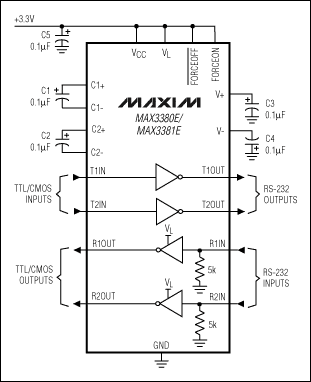
Understanding the Effects of C
Understanding the Effects of Clock Tolerances on 50/60Hz Noise Rejection in High Performance Sigma
2008-10-06 13:56:41 447
447
 447
447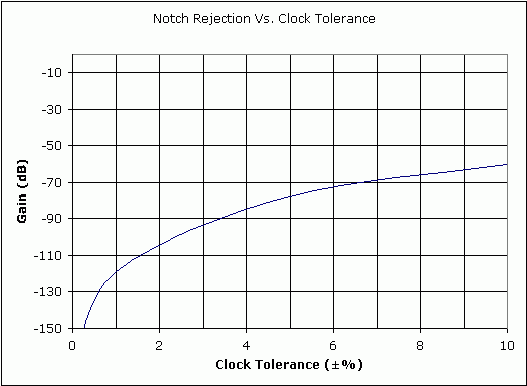
What is voltage stability?
What is voltage stability?
Recently lEEE/CIGRE task force [1] proposed various definitions
2008-11-03 21:14:55 1385
1385
 1385
1385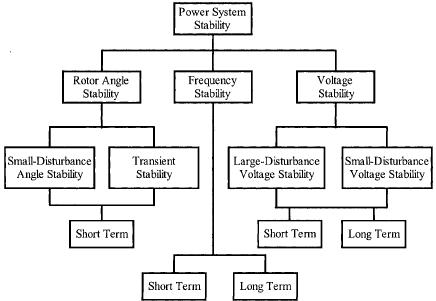
Dual, Voltage-Output DAC Consu
Dual, Voltage-Output DAC Consumes Miniscule Power
The dual, voltage-output DACs shown
2008-11-24 10:19:58 882
882
 882
882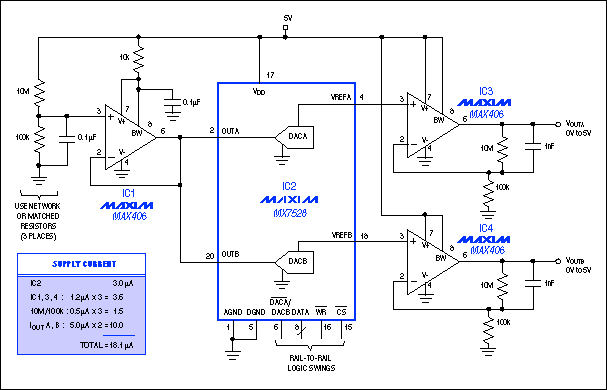
Voltage Reference Vastly Reduc
Abstract: Using a shunt reference and op amp, a low-power, low-voltage series reference can
2009-02-02 15:57:54 1996
1996
 1996
1996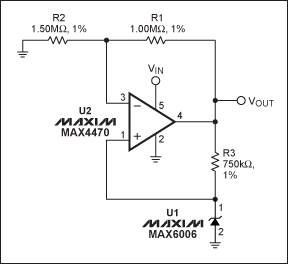
Controlling a Variable Voltage
Abstract: Semiconductor topic: Many linear and switched-mode power supplies and voltage regulators
2009-02-22 14:23:04 1406
1406
 1406
1406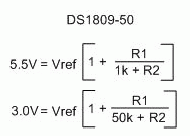
A Quick Guide To Voltage Refer
Abstract: This application note discusses the three basic voltage reference topologies
2009-02-22 14:26:57 1154
1154
 1154
1154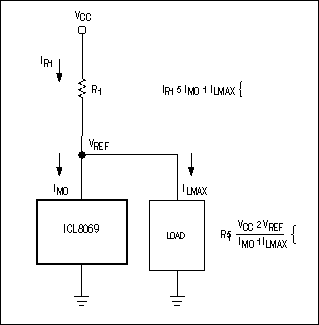
理解物理拓撲結構的穩壓器是用于EMI和EMC設計
理解物理拓撲結構的穩壓器是用于EMI和EMC設計
Abstract: Understanding the physics of voltage regulator topologies
2009-04-21 11:45:05 1316
1316
 1316
1316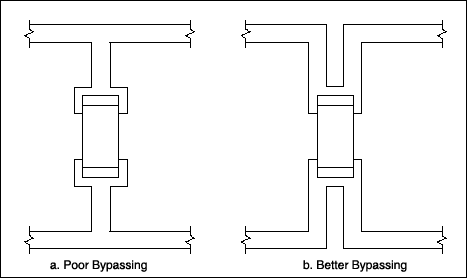
Dual Voltage Tracking Circuit
Abstract: This note describes a dual tracking controller for a single I/O voltage and two core
2009-04-23 14:16:23 880
880
 880
880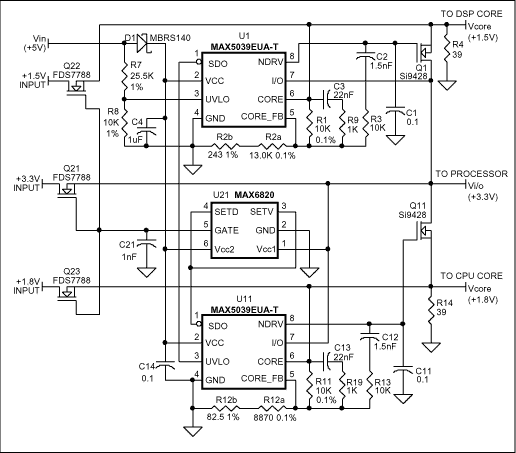
Dual Voltage Tracking Circuit
Abstract: This note describes a dual tracking controller for a single I/O voltage and two core
2009-04-23 17:44:28 1174
1174
 1174
1174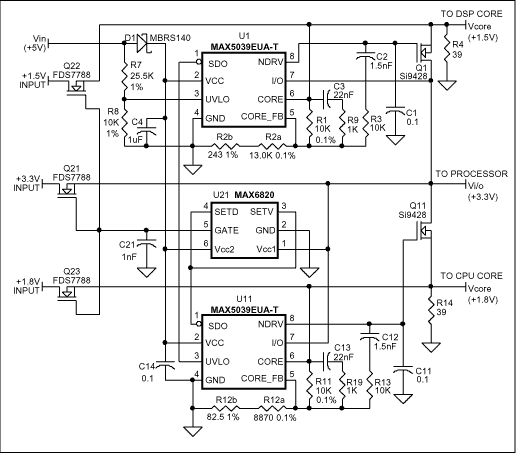
正確的布局和元件選擇控制電磁干擾
Proper Layout and Component Selection Controls EMI
Abstract: Understanding the physics of voltage
2009-04-30 10:44:39 709
709
 709
709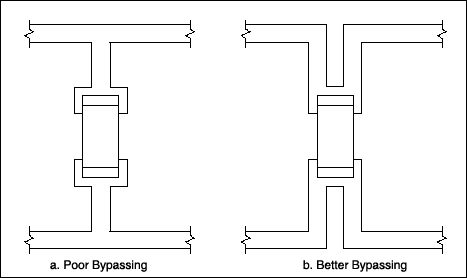
Proper Layout and Component Se
正確的布局和元件選擇控制電磁干擾
Abstract: Understanding the physics of voltage regulator topologies is important
2009-05-04 09:13:22 1063
1063
 1063
1063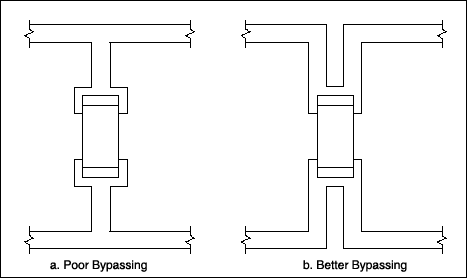
可調參考電壓源:Adjustable Voltage Ref
可調參考電壓源:Adjustable Voltage References
Adjustable voltage reference circuits are shown in Figures 19, 20, 21, 22. The two ci
2009-05-16 16:10:41 3131
3131
 3131
3131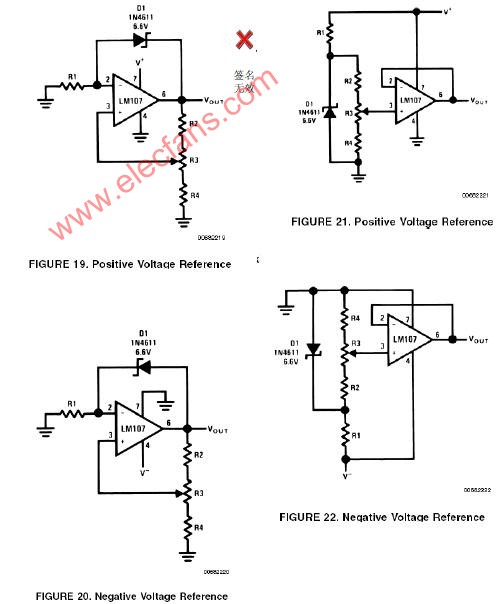
Understanding the ATE SPI (Ser
Understanding the ATE SPI (Serial Peripheral Interface)
Abstract: Most Maxim® ATE
2009-10-02 21:45:49 1370
1370
 1370
1370
Minimize Voltage Offsets in Pr
Minimize Voltage Offsets in Precision Amplifiers
Abstract: Voltage-offset errors in precision
2009-10-03 08:49:35 1110
1110
 1110
1110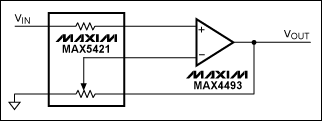
How to Use High-Voltage and Hi
How to Use High-Voltage and High-Current-Drive Op Amps in 4–20mA Current-Loop Systems
Abstract
2010-02-21 11:45:05 1576
1576
 1576
1576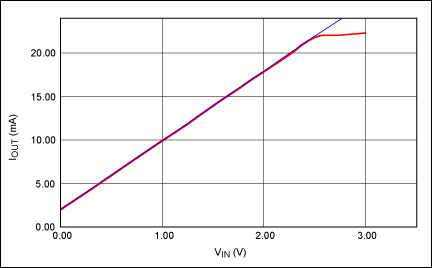
絕版經典:中文版數字信號處理understanding Digital s
電子發燒友網站提供《絕版經典:中文版數字信號處理understanding Digital s.txt》資料免費下載
2014-03-31 22:44:04 0
0
 0
0繪圖案例【Circuit Simulation】Voltage
繪圖案例【Circuit Simulation】Voltage Controlled Oscillator
2016-02-16 11:24:26 0
0
 0
0Transient_Voltage_Suppressors_SMBJ_Series_C8834
Transient_Voltage_Suppressors_SMBJ_Series_C8834,感興趣的小伙伴們可以看看。
2016-08-03 17:55:44 0
0
 0
0ESD Protection for Mixed-Voltage IO in Low-Voltage Thin-Oxide CMOS
ESD Protection for Mixed-Voltage IO in Low-Voltage Thin-Oxide CMOS
2017-10-17 11:28:32 12
12
 12
12LTC2949: Current, Voltage, and Charge Monitor for High Voltage Battery Packs Data Sheet
LTC2949: Current, Voltage, and Charge Monitor for High Voltage Battery Packs Data Sheet
2021-01-28 12:49:20 8
8
 8
8LTC6990: Voltage Controlled Silicon Oscillator
LTC6990: Voltage Controlled Silicon Oscillator
2021-02-04 08:04:02 3
3
 3
3LTC3649 Demo Circuit - High Voltage Synchronous Buck Regulator with Output Voltage Control (10-60V to 5V @ 4A)
LTC3649 Demo Circuit - High Voltage Synchronous Buck Regulator with Output Voltage Control (10-60V to 5V @ 4A)
2021-02-04 09:01:06 3
3
 3
3使用Voltage-controlled Voltage Source仿真放大器
在上篇《活學活用 LTspice 進行電路設計 — 用 Behavioral Voltage Sources 創建任意波形》中,我們向大家介紹了如何使用 Behavioral Voltage
2023-04-20 09:43:05 1107
1107
 1107
1107用Voltage-controlled Voltage Source仿真放大器
Voltage-controlled Voltage Source (VCVS) 具有 4 個端?。左側的 2 個端子為輸入端子 (控制端子),可輸出與輸入電壓差成比例的電壓。因此,如果比例常數大于
2023-06-06 09:35:40 521
521
 521
521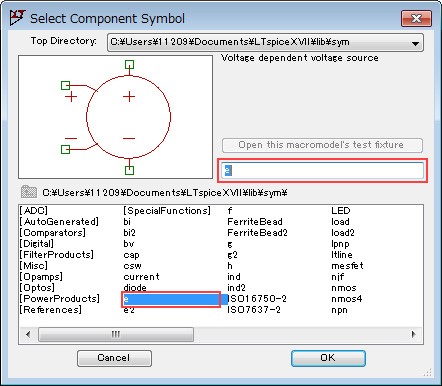
MAX16132-MAX16135: Low-Voltage, Precision, Single/Dual/Triple/Quad-Voltage μP Supervisors Data Sheet MAX16132-MAX16135: Low-Voltage, Precisi
電子發燒友網為你提供ADI(ADI)MAX16132-MAX16135: Low-Voltage, Precision, Single/Dual/Triple/Quad-Voltage
2023-10-13 18:38:22

MAX6069: 1μA WLP Precision Shunt Voltage Reference Data Sheet MAX6069: 1μA WLP Precision Shunt Voltage Reference Data Sheet
電子發燒友網為你提供ADI(ADI)MAX6069: 1μA WLP Precision Shunt Voltage Reference Data Sheet相關產品參數、數據手冊,更有
2023-10-16 18:45:26

 電子發燒友App
電子發燒友App









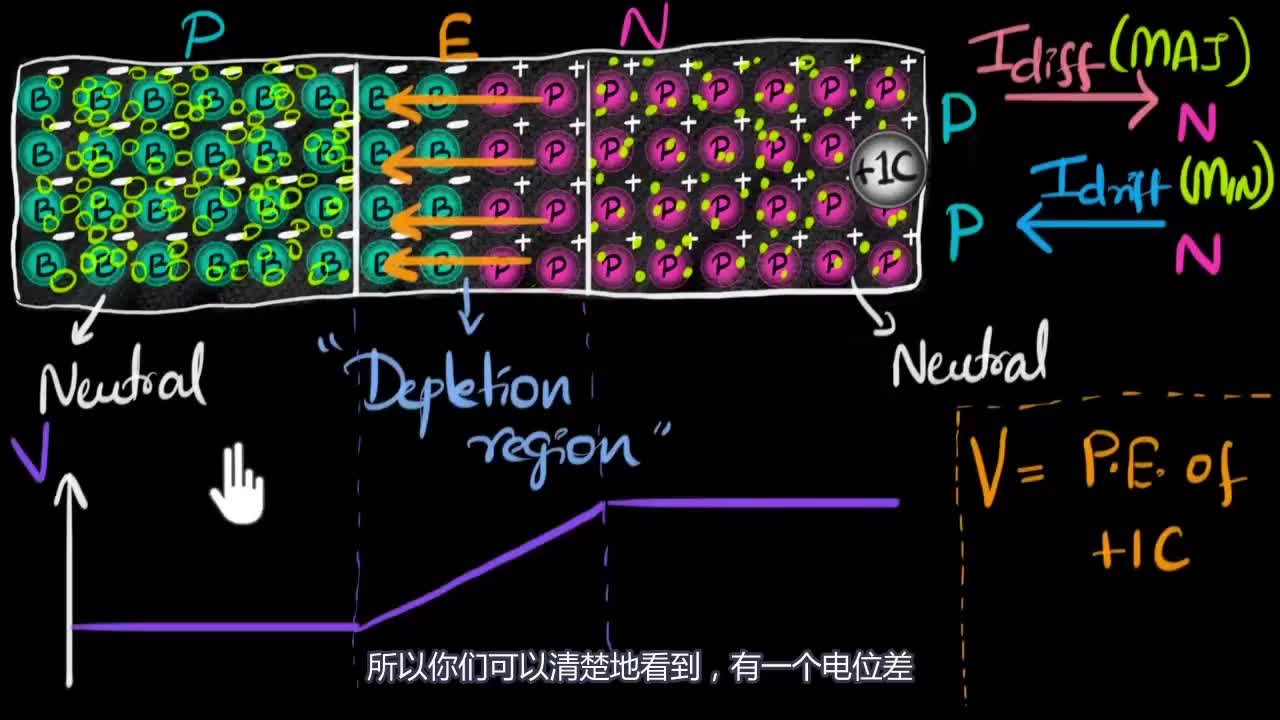
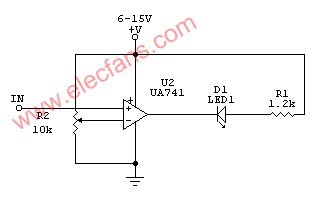










評論